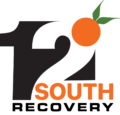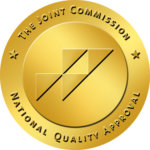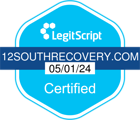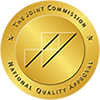Preparing to enter treatment for substance use disorder (SUD) can foster feelings of uncertainty and overwhelm. Many people may feel weighed down with the responsibility of choosing the best-fit treatment center. It may be relieving to know that a person doesn’t need to decide alone. With help from a treatment professional and a thorough understanding of the continuum of care, individuals can feel confident about entering treatment for SUD and co-occurring mental health disorders.
What’s the Continuum of Care?
It can be stressful to think that there is a “right” way to go about treatment for SUD. Fortunately, there is a standard continuum of care for substance abuse treatment that allows individuals to transition from one program to another based on their unique needs and goals for recovery.
The Substance Abuse and Mental Health Services Administration (SAMHSA) defines a continuum of care as “a treatment system in which clients enter treatment at a level appropriate to their needs and then step up to more intense treatment or down to less intense treatment as needed.”
The 5 Levels in the Continuum of Care
There are five levels in the continuum of care for substance abuse treatment, established by the American Society of Medicine (ASAM). These five levels include:
- Level 0.5: Early intervention services
- Level I: Outpatient programs
- Level II: Intensive outpatient programs (IOP) and partial hospitalization programs (PHP)
- Level III: Residential/Inpatient programs
- Level IV: Medically managed intensive inpatient services (including detoxification services)
Becoming familiar with each of these treatment levels can help individuals make more informed decisions about treatment.
Level 0.5: Early Intervention
This level in the continuum of care offers services that work to prevent substance use, abuse, and addiction, as well as provide harm reduction resources for individuals who use drugs. According to SAMHSA, the goals of early intervention include:
- Reducing harms associated with substance misuse
- Decreasing risky behaviors before they lead to injury
- Improving the health and social functioning of individuals who use drugs
- Prevent the progression of substance misuse or abuse to SUD
Further, SAMHSA explains that early intervention “consists of providing information about substance use risks, normal or safe levels of use, and strategies to quit or cut down on use and use-related risk behaviors, and facilitating patient initiation and engagement in treatment when needed.” These services may be provided in a variety of settings to both adults and adolescents who are at risk of SUD.
Level I: Outpatient Programs
Stepping up from early intervention in the continuum of care, outpatient programs provide basic treatment services. In an outpatient program, an individual visits a treatment facility as needed throughout the week without spending the night. They may participate in a variety of therapeutic services, such as individual and group therapy.
Outpatient programs are the most flexible type of treatment program available. They are a great option for individuals who need continuing aftercare after completing a higher level. Additionally, outpatient programs can be valuable for individuals who have personal responsibilities that can not be put on hold for treatment.
Level II: IOP & PHP
Working up in the continuum of care, treatment becomes more structured and intensive. However, individuals must live at home (or at a sober living home) while participating in IOP and PHP. This level may be used as an alternative to residential treatment. They offer direct services for individuals with mild to moderate symptoms of SUD and co-occurring mental health disorders who do not require 24-hour supervision.
According to Psychiatric Services (Washington, D.C.), “IOP services offer a minimum of 9 hours of service per week in three, 3-hour sessions; however, some programs provide more sessions per week and/or longer sessions per day, and many programs become less intensive over time.” On the other hand, PHP programs are even more intensive, requiring three hours of treatment a day at least four days a week. For some PHP programs, the standard hours of treatment participation are 20 hours a week.
Level III: Residential and Inpatient Programs
Residential and inpatient treatment programs require individuals to reside at the treatment facility. These programs are highly structured, providing 24/7 health and support services for clients. Individuals will live amongst other peers in recovery. This can offer a great opportunity to form sober connections and utilize peer support.
Level IV: Medically Managed Intensive Inpatient Services
This level in the continuum of care is suggested for individuals with severe or extreme symptoms of SUD and co-occurring mental health disorders. Individuals that utilize these services may require intensive medical monitoring and psychological support, especially for circumstances such as detoxification. During the detox process, individuals attempting to cease chronic substance abuse may experience life-threatening complications without the aid of medical support. These services may also be utilized for those experiencing extreme psychiatric symptoms.
Entering the Continuum of Care
After gaining a brief understanding of each of the five levels of care, individuals may still have hesitations about what level to enter substance abuse treatment. Consider reaching out to staff at a potential treatment facility. Additionally, know that it is standard protocol to undergo an initial evaluation upon arrival at a treatment facility. The evaluation will inform staff members about an individual’s unique symptoms, the severity of their symptoms, and whether or not they will need detox before treatment can begin. After the evaluation, an individual can work with the staff members to select a course of treatment that fits their unique needs.
There are five levels in the continuum of care established by the American Society for Medicine for substance abuse treatment. Becoming familiar with each of these five levels can help individuals make more informed treatment decisions for themselves or their loved ones. 12 South Recovery is an addiction and mental health treatment facility that offers a wide range of outpatient treatment programs. Within our programs, we utilize a variety of therapeutic interventions and services to individualize our client’s care. If we do not offer the level of care that you or a loved one requires, we can refer you to a treatment facility that does. We are passionate about helping our clients achieve lasting recovery. Call us at 866-839-6876.
